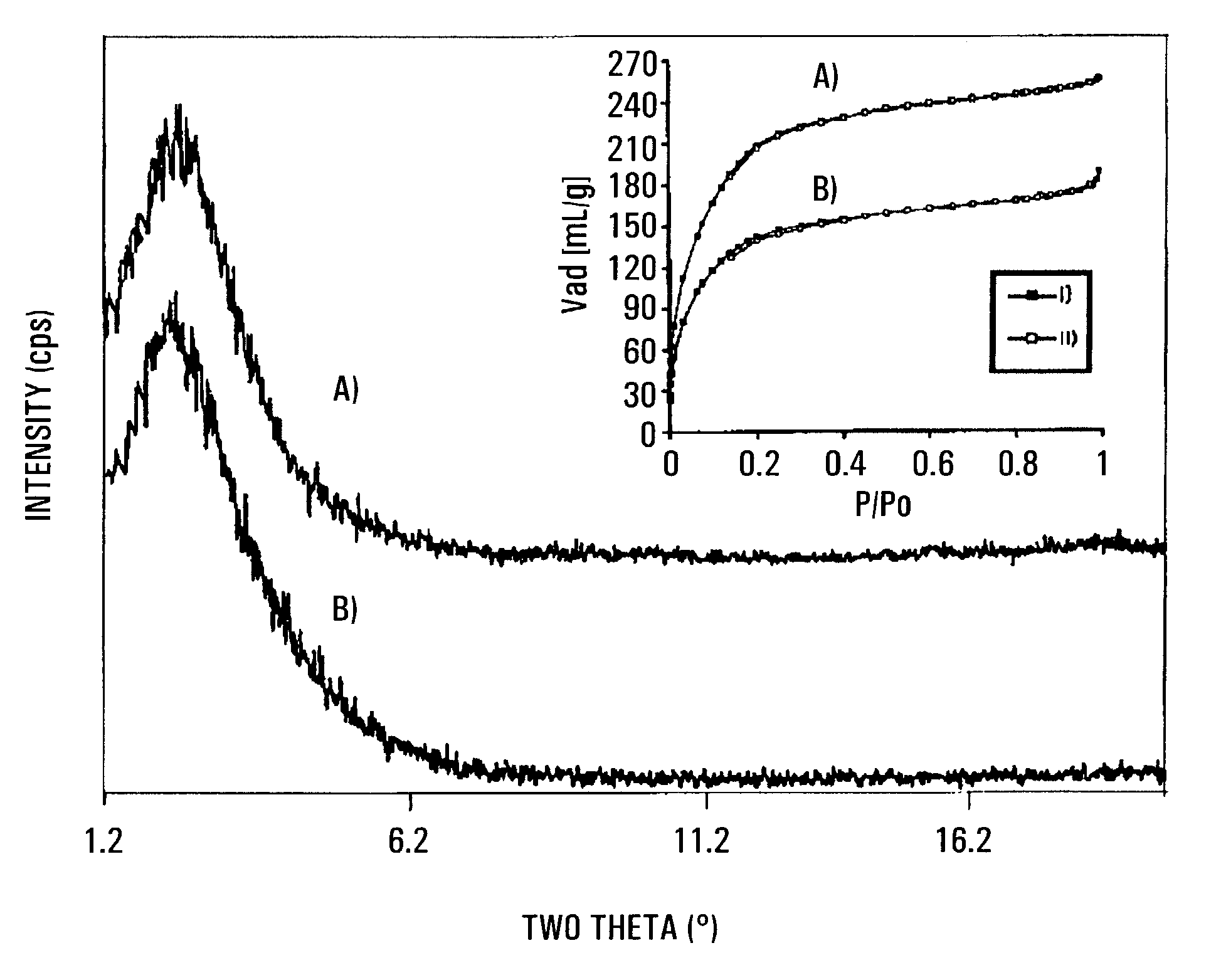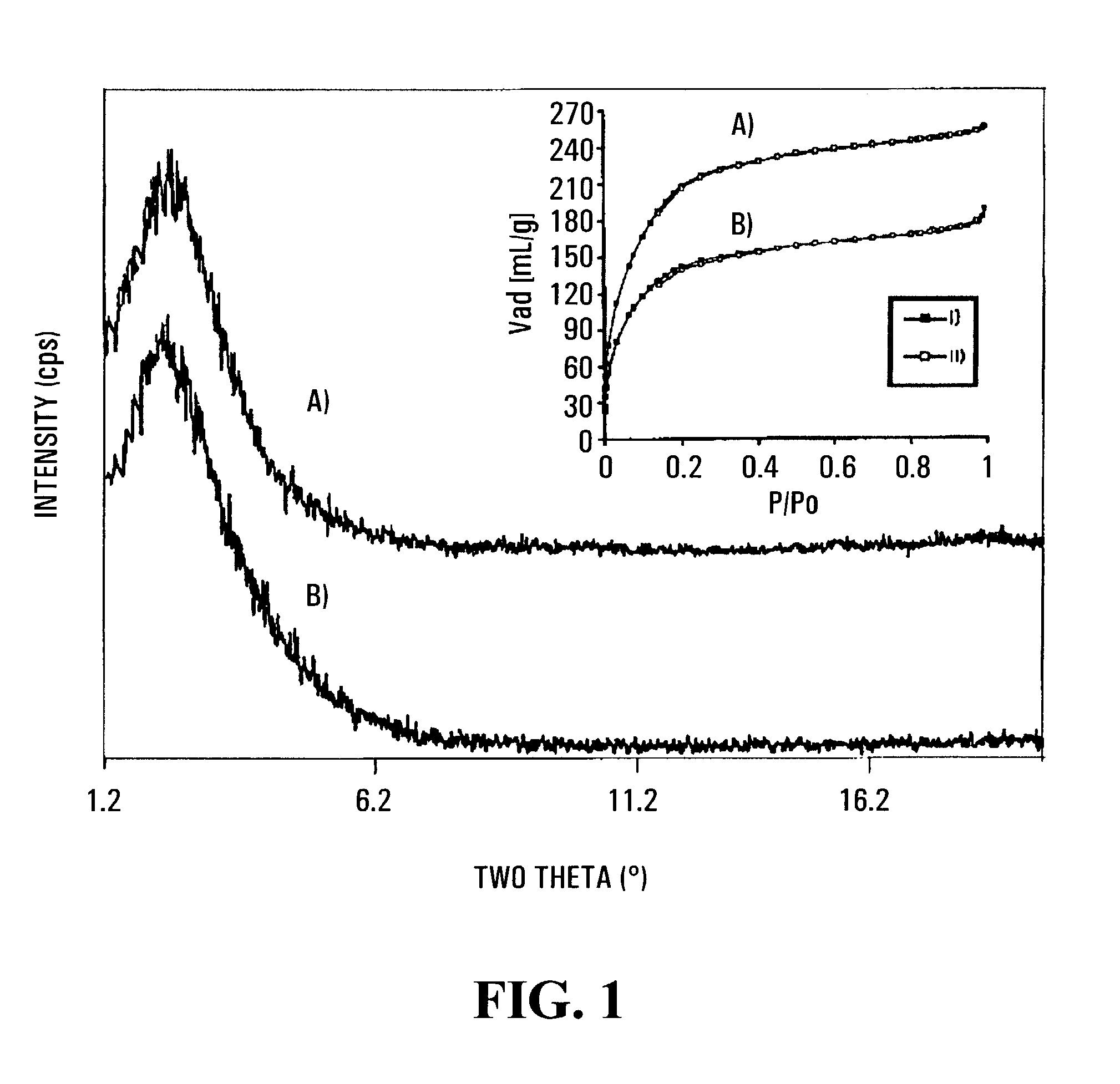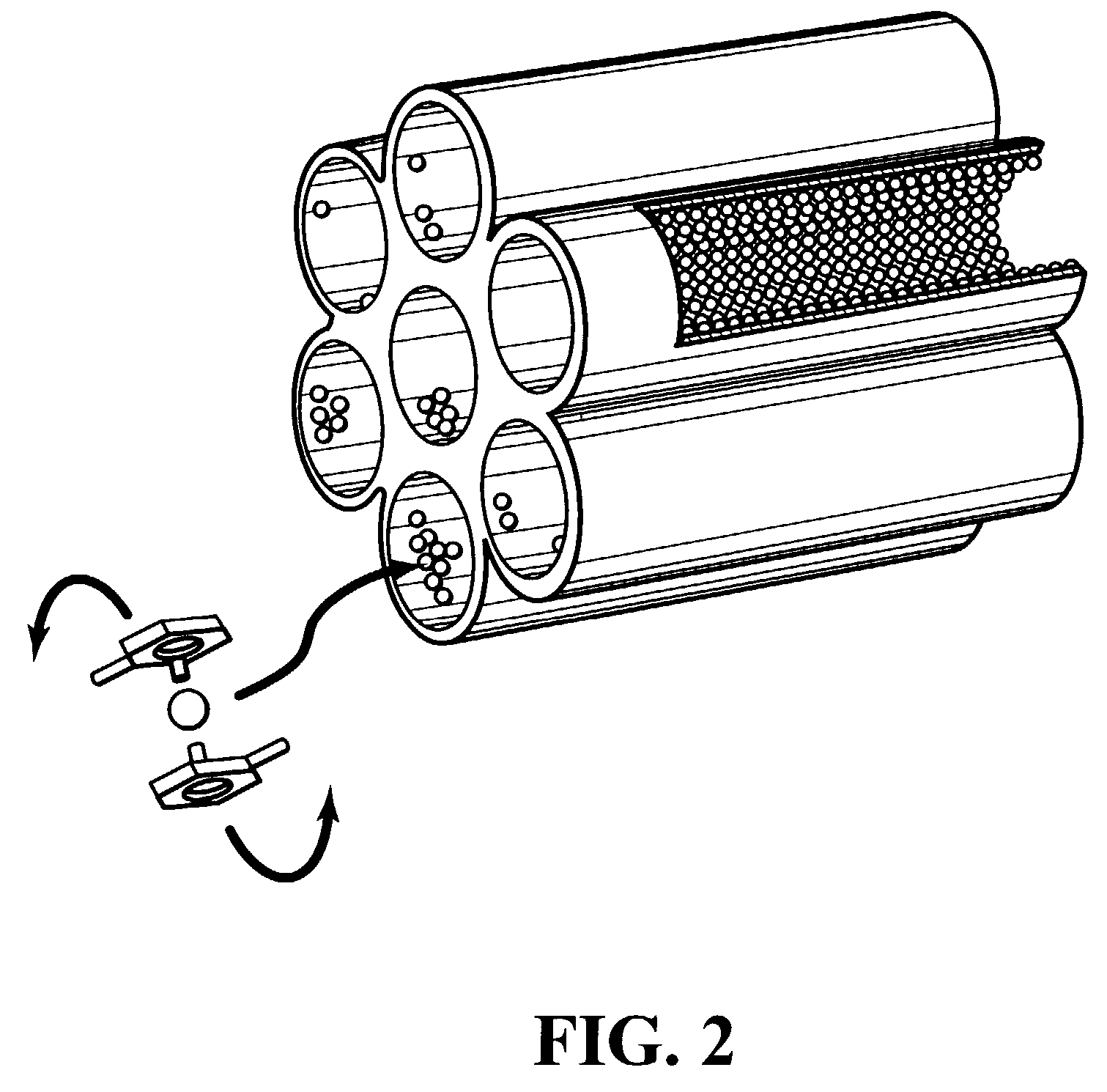Metallic mesoporous transition metal oxide molecular sieves, room temperature activation of dinitrogen and ammonia production
a transition metal oxide and molecular sieve technology, applied in the field of stable metallic mosoporous transition metal oxide molecular sieves, can solve the problems of not being able to prevent the oxidation of low-valent metal oxide precursors, many intriguing curiosities of systems, and being too severe for directing reactions
- Summary
- Abstract
- Description
- Claims
- Application Information
AI Technical Summary
Problems solved by technology
Method used
Image
Examples
example 1
Nb / Nb Oxide Mesoporous Molecular Sieves and N2 Activation
[0074]As detailed below, the treatment of mesoporous niobium oxide15-19 with bis(toluene)niobium leads to mesoporous materials with metallic properties via single atom Nb transfer to the walls of the structure. The conductivity of these materials is 10,000 times greater than that of semiconducting mesoporous Mn oxides.20 Because of their high surface areas of up to 700 m2g−1, these new metal oxide structures differ substantially from non-oxide mesostructured Pt systems14 which have low surface areas of only 23 m2g−1 with no discernable diffraction pattern, virtually the same as that for colloidal Pt. The unique properties of these materials are illustrated by a room-temperature dinitrogen cleavage reaction, an extremely rare process21-23 that is central to the development of catalytic processes involving nitrogen incorporation into substrate molecules.
[0075]When a sample of mesoporous niobium oxide15 possessing a BET surface a...
example 2
Ti / Ti Oxide Mesoporous Molecular Sieve, N2 Activation and NH3 Synthesis
[0082]Mesoporous titanium oxide was treated with bis(toluene)titanium under nitrogen at room temperature in toluene, leading to a new blue-black material possessing conductivity values of up to 10−2 ohm−1 cm−1. XRD and nitrogen adsorption showed that the mesostructure was fully retained. Elemental analysis indicated that the material absorbed Ti from the organometallic, without any incorporation of the toluene ligand. There was also an increase of nitrogen from below the detection limit to 1.16%. XPS studies showed that the Ti framework was reduced by the organometallic and that the material had reduced nitride on the surface. There was also an emission at the Fermi level, suggesting metallic behavior. This was confirmed by variable temperature conductivity studies, which showed a gradual decrease of resistivity with temperature. Superconducting quantum Interference device (SQUID) magnetometer studies revealed sp...
example 3
[0099]The procedures of Examples 1 and 2 were repeated using mesoporous tantalum oxide as the non-metallic sieve and bis(toluene)tantalum. The resultant metallic sieve was shown to have picked up a total of 1.82% N as determined by elemental analysis, i.e., the mesoporous tantalum oxide when treated with bis(toluene)tantalum in the presence of N2 produced activated nitrogen.
PUM
| Property | Measurement | Unit |
|---|---|---|
| temperature | aaaaa | aaaaa |
| binding energy | aaaaa | aaaaa |
| Fermi level | aaaaa | aaaaa |
Abstract
Description
Claims
Application Information
 Login to View More
Login to View More - R&D
- Intellectual Property
- Life Sciences
- Materials
- Tech Scout
- Unparalleled Data Quality
- Higher Quality Content
- 60% Fewer Hallucinations
Browse by: Latest US Patents, China's latest patents, Technical Efficacy Thesaurus, Application Domain, Technology Topic, Popular Technical Reports.
© 2025 PatSnap. All rights reserved.Legal|Privacy policy|Modern Slavery Act Transparency Statement|Sitemap|About US| Contact US: help@patsnap.com



